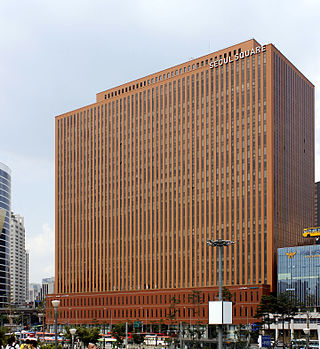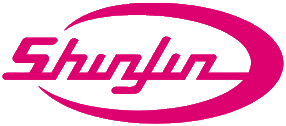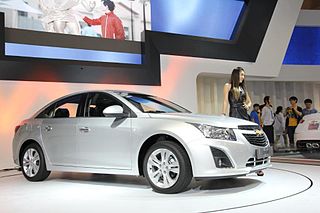Origins
The history of the Korean automotive industry began in August 1955, when Choi Mu-seong, a Korean businessman, and two of his brothers (Choi Hae-seong and Choi Soon-seong), mounted a modified and localized jeep engine on a US military jeep-style car body made with the sheet metal from a junk oil drum can and military junk Jeep parts to manufacture its first car, called the Sibal (car). Sibal translates as new go or new start.
To develop the automobile industry, the Korean government announced an "Automobile Industry Promotion Policy" in 1962, and The Automobile Industry Protection Act to protect the infant industry. Foreign automakers were barred from operating in Korea, except in joint ventures with local business entities. The government's efforts led to companies that were established in other businesses entering the industry, and the formation of new startups. Three companies were established in 1962: Kyeongseong Precision Industry, which changed its name to "Kia Industry", and started assembling cars in cooperation with Mazda in 1962; Dongbang Automobiles, which was merged with Ha Dong-hwan Workshop and became Ha Dong-hwan Automobile Industry Co. (the predecessor of SsangYong Motor Company) in 1963; and Saenara Automobile, established with the technical cooperation of Nissan Motor Co.; it was the first automaker in Korea that was equipped with modern assembly facilities, and acquired by Shinjin Industries in 1965. The Asia Motors Company was established in 1965, and the Hyundai Motor Company in 1968 with the technical cooperation of the Ford Motor Company. However, all these companies were then merely automotive assemblers, importing parts from overseas partners.
1970 to 1990
In 1970, Toyota began to show hesitation in continuing its relationship with Shinjin Automobiles. After Toyota's withdrawal in 1972, Shinjin entered into a joint venture with General Motors and formed General Motors Korea, which was renamed Saehan Motors in 1976. Kia opened its Sohari Plant in 1973 in Gwangmyeong, South Korea.
The Hyundai Pony, the first Korean-developed automobile, was built in 1975. Hyundai Motors accomplished this by engaging George Turnbull of British Leyland Motor Corporation as vice-president. The final result was a collaborative effort, comprising:
Hyundai chalked up another first when it exported the Pony to South America, in countries like Colombia, Venezuela and Ecuador between 1976 and 1982, making it the first Korean-developed car to be exported. In 1977, Motores Tecno in Costa Rica, became the first Hyundai distributor in Central America, where the Hyundai Pony pickup were sold.
In 1982, the Daewoo Group gained control of Saehan Motors, and changed its name to Daewoo Motors in 1983. However, the Korean automobile industry suffered greatly from the 1979 energy crisis, and the consequent local recession. The government took action to resolve this difficult situation in 1982 by implementing the "Automobile Industry Rationalization Policy", the objective of which was to prevent excessive competition between the four major domestic automakers: Hyundai Motors, Kia Industry, General Motors Korea, and Asia Motors. Additionally, the government postponed its import liberalization of automobiles.
Shinjin Jeep Motors, which was a subsidiary of Shinjin Motors, changed its name to Geohwa Co. in 1981, and was taken over by Dong-A Motor Co. (formerly Ha Dong-hwan Automobile Industry Co.) in 1985. In 1986, the company was renamed the SsangYong Motor Company.
While localization of auto parts was the major concern during the 1970s, developing mass production system for the export-oriented industry became the issue during the 1980s. Hyundai entered the United States market in 1986 with the Excel (as the Pony was known there), and set a record for selling the most automobiles in its first year of business in the United States compared with any other car brand – 126,000 vehicles. Fortune magazine nominated the Excel for the "Best Product 10" award, largely because of its low price. However, the cars were of low quality and often broke down. This led to Hyundai having a poor reputation in the United States. With this initial success in the export market, the company began in 1989 to produce models, designed in-house and manufactured with its own technology, starting with the Sonata, a medium-sized sedan. The Sonata, nevertheless, still featured many Mitsubishi designs and parts.
1990 to present
Hyundai's cumulative exports to the U.S. exceeded one million in 1990. In 1992 its ScoupeTurbo won at the Pikes Peak Hill Climb Rally, and in 1993 its Elantra was selected as the "Best Car of 1993" in Australia. Hyundai's Accent earned Canadian Best Buy Award in 1995, and its Avante also won the Asia-Pacific Rally that year. Yet, amidst all the successes, trouble was brewing for Hyundai. However this was not it.
The Excel, although initially well received, gave Hyundai a bad image, as over time its faults became apparent. Also, in efforts to bring the costs down, its quality and reliability suffered. As time caught up with the poor reputation of Hyundai in the United States, sales dropped drastically, and car dealerships started abandoning their franchises.
Rather than drop out of the world's largest automotive market, Hyundai began investing heavily in the quality, design, manufacturing, and long-term research of its vehicles in 1998, and added a ten-year or 100,000-mile warranty to its vehicles in the United States. This effort paid dividends for Hyundai, and in 2004 the company tied with Honda for initial brand quality, second in the industry behind Toyota, in a survey conducted by J.D. Power and Associates.
Towards the end of the 20th century, however, the industry began to face tremendous pressures at home, with the domestic market growing at under five percent, and greater competition, both locally and abroad. With energy waste, air pollution, and traffic congestion becoming more chronic, the Korean government has imposed the heaviest vehicle excise duty on automobiles and gasoline among the major automobile-producing countries. In 1985, the number of vehicles registered in Korea was one million, but by 1995 the total had increased to eight million. In response to these pressures, Korean automakers have become more aggressive in terms of pricing and quality, and begun developing larger cars, and broadening their product ranges to meet diverse customer preferences.
Internal pressures at home have also forced Korean automobile manufacturers to venture aggressively into international markets. In the early 1990s, Daewoo Motors also began to expand heavily throughout the world. Until 1996, its cars were all based on General Motors' models. After the Asian financial crisis that started in 1997, it took over the troubled SUV specialist, SsangYong, in 1998, but ran into financial trouble in 1999.
Asia Motors was completely merged with Kia Motors Company (the new name for Kia Industry, changed in 1990) in 1999. Kia Motors had financial trouble in 1997, and helped push South Korea into the Asian financial crisis. Kia was subsequently acquired by Hyundai Motors in 1998.
Samsung's entry into the automobile industry was also ill-fated. Established in 1994, Samsung Motors, its car manufacture. started selling cars in 1998, just when South Korea was hit by the Asian financial crisis. Faced with financial difficulties, Samsung sold a seventy percent stake in the company to Renault in September 2000, and it was renamed Renault Samsung Motors. Samsung also ventured into the heavy vehicle market, founding Samsung Commercial Vehicles in 1996, [1] [2] [3] [4] although this second company filed for bankruptcy in 2000, [4] [5] [6] [7] ending the liquidation in 2002. [2]
The purchase of Daewoo Motors by General Motors Corporation in 2002, and Hyundai's completion of a one billion dollar assembly plant in Alabama in 2005, are two major developments that will further drive the Korean automobile industry to focus on North America, its largest export market. The move to the U.S. makes Hyundai the sixth Asian automaker to build a U.S. factory, the third foreign maker to pick Alabama, and the sixth automaker to locate in the Southeastern United States since 1990. Now opening in 2009 is another U.S. factory that will be a twin to the Alabama factory. It is located in West Point, Ga and will build KIA cars.
As the world leader in rechargeable battery production, South Korean manufacturers rely on imports for more than 60% of battery material, most of which comes from China. This leaves South Korea vulnerable to trade tensions and geopolitical shocks with China and other countries in the region. [8]
















